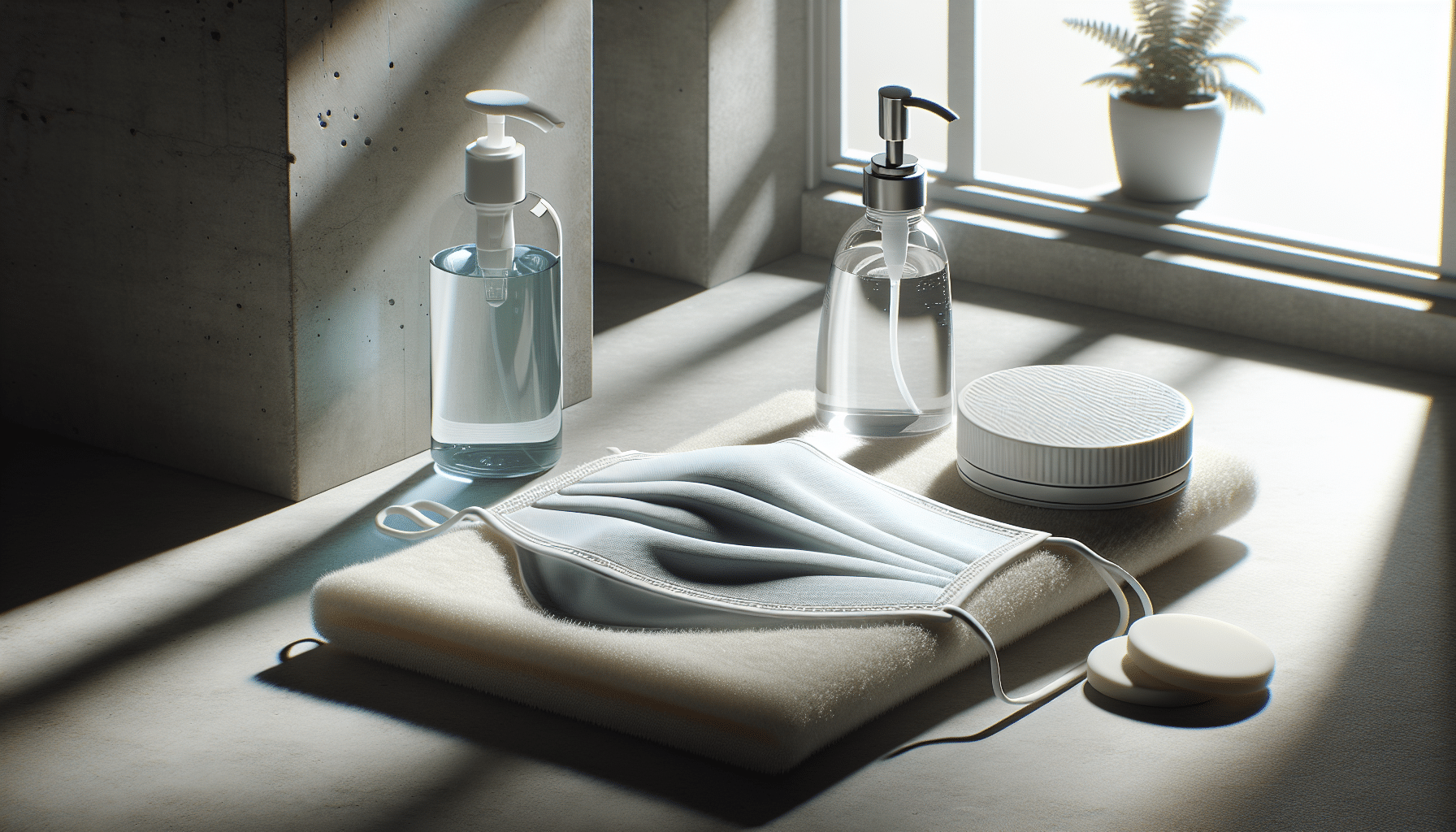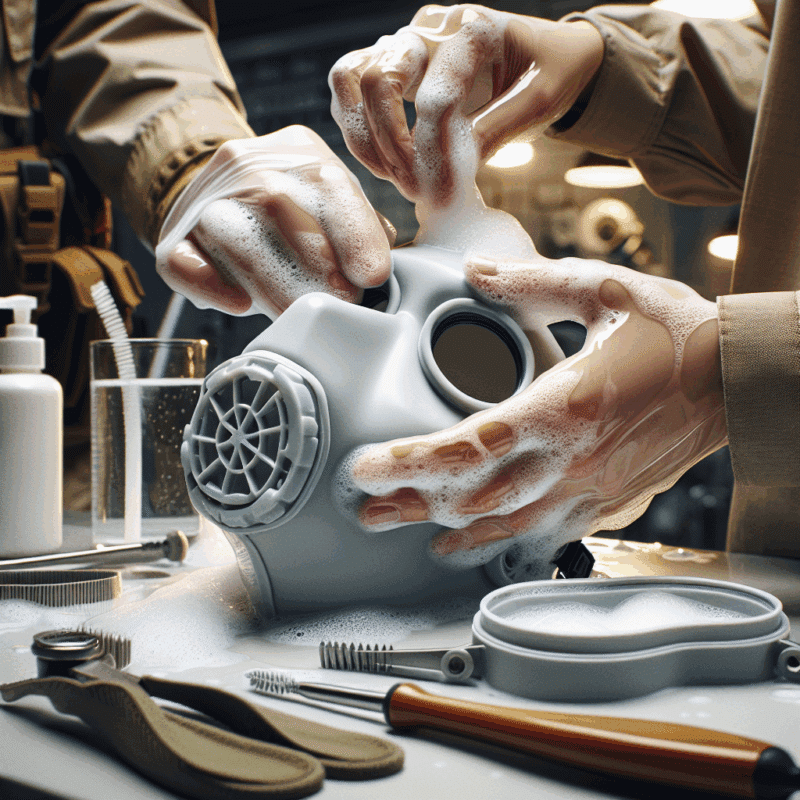How to Clean Your CoreMask: Washable Face Seal Care Advice
In This Article
- Always hand wash the CoreMask face seal with mild, unscented soap and lukewarm water.
- Never use harsh chemicals, dishwasher cycles, or extreme heat for cleaning or drying.
- Clean after each use in high-exposure settings, or every third use in low-risk environments.
- Inspect regularly for signs of wear, discolouration, or loss of seal integrity.
- Follow official cleaning guidelines and manufacturer instructions to maintain optimal performance.
Why Cleaning Your CoreMask Matters
Prolonging Product Life
CoreMask cleaning is not simply a matter of hygiene—it’s a calculated step in prolonging the overall performance and structural integrity of your protective gear. A well-maintained face seal not only offers optimal protection but also ensures comfort and a proper fit over time. Neglecting regular cleaning can lead to a build-up of dirt, oils, and hazardous particles, which in turn may degrade the materials and reduce the mask’s sealing ability. Over time, this negligence shortens the mask’s lifespan significantly. By incorporating a consistent cleaning regimen, you help preserve the mask’s high-grade silicone, inhibit bacteria growth, and maintain its original effectiveness.

Step-by-Step Guide to Washing the Face Seal
Hand Washing Best Practices
Cleaning your CoreMask’s face seal by hand is the safest and most recommended approach. Begin by separating the face seal from the mask body, referencing your manufacturer’s manual if needed. Use lukewarm water—never hot—as excessive temperatures can warp the silicone material. Next, prepare a solution using a mild, fragrance-free detergent. Dip a microfibre cloth or soft-bristle brush into the mixture and gently scrub the entire surface of the face seal, paying special attention to crevices where dirt and skin oils tend to accumulate.
Once scrubbed, rinse thoroughly under running lukewarm water to eliminate residue. Avoid using high-pressure sprays, which can degrade adhesives or embedded materials. After rinsing, inspect the face seal for lingering particles, then give it a final rinse if necessary. Lastly, tap it gently with a lint-free towel to remove excess water before proceeding to the drying phase.
“Cleaning your CoreMask regularly ensures maximum protection and supports long-term use—an essential practice for occupational safety.”
Common Mistakes to Avoid
In CoreMask cleaning, seemingly small mistakes can have substantial effects. One of the most critical errors is using harsh cleaning agents such as bleach, ethanol, or disinfectant sprays. These substances may compromise the silicone and potentially cause skin irritation. Similarly, never place the face seal in a dishwasher or expose it to extreme heat, including from radiators or direct sunlight. Yet another error is scrubbing with abrasive pads, which can scratch the seal’s surface and reduce its ability to form a secure bond with your face.
Additionally, inconsistent cleaning or allowing prolonged exposure to contaminants can lead to embedded bacteria or allergens. Avoid storing a still-damp face seal in sealed containers, which accelerates mould growth. Ultimately, detail and regularity matter in your CoreMask cleaning routine. Adhering to best practices protects both your health and investment.
Ideal Frequency for Cleaning Your PPE Mask
How often you should clean your CoreMask depends on usage frequency and exposure levels. As a rule of thumb, users in high-exposure environments—such as healthcare, fire safety, or construction—should clean the face seal after every use. For casual or low-risk environments, cleaning after every third or fourth use may suffice. However, any visible dirt, sweat, or fogging should prompt immediate cleaning regardless of the interval. Seasonal factors like heat and humidity might necessitate more frequent maintenance due to increased perspiration and bacteria proliferation.
Adopting a schedule helps standardise the process. Include mask cleaning in your end-of-shift routine or pair it with PPE storage practices. Consider maintaining a secondary CoreMask or face seal so one is always available while the other air-dries completely, ensuring uninterrupted protection.
Tools and Supplies You’ll Need
Proper CoreMask cleaning requires a few essential tools, many of which are readily available. First and foremost is a soft brush or microfibre cloth to avoid scratching the silicone. Use a basin of lukewarm water and gentle, nonabrasive detergent—preferably a neutral, pH-balanced liquid soap. Avoid scented or coloured soaps, as they often contain additives that can irritate the skin or harm the seal’s silicone.
Additionally, a lint-free towel comes in handy for drying. A drying rack or well-ventilated, clean area is necessary for safe air drying. You may also wish to have gloves to protect your hands or maintain sterility. For on-the-go cleaning, pre-moistened wipes designed for silicone might be useful; however, they should be approved by the mask manufacturer.
Safe Drying Methods for Silicone Seals
Post-cleaning drying techniques are as essential as the washing process itself. Never attempt to speed up drying by placing the face seal near a heater, under direct sun, or in any drying appliance. High heat warps silicone and can render it unfit for use. Instead, use a clean, breathable surface away from dirt, pet hair, or residues that might compromise cleanliness.
Lay the face seal flat or hang it using non-metallic clips in an area with natural ventilation. If you’ve used a towel to remove moisture, ensure the towel is lint-free to avoid clogging the seal’s surface. Allow ample time—usually several hours—for complete drying before reassembling or storing your mask. Moisture left on seals during storage promotes bacterial or fungal growth.
Signs It’s Time to Replace or Inspect
No matter how diligent you are with CoreMask cleaning, the face seal will eventually need evaluation. Key indicators include visible cracking, deformation, loss of elasticity, and discolouration. Any area that appears excessively worn or unable to return to its original shape after use should be replaced immediately. Similarly, if the sealing edge no longer adheres properly to your face, even after cleaning and drying, reassessment is necessary.
Frequent fogging inside the mask, despite a clean seal, might indicate wear or misalignment. Also, an ongoing odour even after washing is commonly a sign of embedded contaminants. The CoreMask manual provides detailed timelines and benchmarks—Learn more about Reusable Dust Mask Maintenance & Care—for identifying when a seal is beyond service.
Can I Machine Wash My Mask? Explained
The straightforward answer is: it’s not recommended. While some parts of the CoreMask may be labelled as machine-washable, the face seal requires manual attention. Washing machines introduce unpredictable agitation and temperature shifts, which risk stretching or tearing crucial components. The likelihood of mechanical damage vastly increases when items tumble freely or become entangled with other items.
Moreover, most household detergents designed for machines are too harsh for silicone. They often contain enzymes or brighteners that can deteriorate protective layers. Stick to the manual method for the face seal and consult the official cleaning document—Guidelines for thoroughly washing mask face seals—for machine-compatibility details on other mask components.
Top Questions Around Mask Cleaning
How long should the cleaning process take?
On average, a complete CoreMask cleaning, including drying time, spans anywhere from 30 minutes to several hours. The washing component typically takes 10–15 minutes, depending on contamination levels.
Can I use antibacterial wipes?
Only use wipes specifically designed for silicone-based medical gear. General-purpose wipes may leave corrosive residues. Always refer to Improving PPE support with multilingual automation for up-to-date recommendations.
Is it OK to air dry overnight?
Yes—air drying overnight in a clean, ventilated environment is ideal. Just ensure the area is free from dust and away from direct sunlight or heaters.
Official Cleaning Guidelines
The official CoreMask care guide offers comprehensive, standardised recommendations. It specifies approved soaps by pH range, recommended drying durations, and temperature limits. It also details fail-safe inspection timelines. Most manufacturers advise cleaning within one hour of use in contaminated environments and strongly discourage mixing mask components from different models during cleaning.
Refer to your CoreMask’s instruction manual or the technical sheet located here—Read a related article—for brand-specific protocols. These instructions should be followed precisely to avoid voiding warranties or compromising safety features.
Practical Advice From the Torxup Team
At Torxup, we’ve developed, tested, and validated robust strategies for CoreMask cleaning over years of industrial use. Our technicians recommend maintaining a dedicated cleaning station equipped with nonmetal accessories, dedicated cloths, and logbooks. Keeping a tracking system—a simple sticker or checklist—can help ensure each mask receives the care it needs at consistent intervals.
Our internal tests show that masks maintained under stringent cleaning schedules outperform neglected ones by up to 35% over a 12-month cycle. Investing in proper maintenance pays off through consistent safety, reduced reordering costs, and better regulatory compliance. For further insights on industrial PPE upkeep, visit our published studies via Learn more about Reusable Dust Mask Maintenance & Care.
Conclusion: Build a Better Cleaning Routine
CoreMask cleaning should be at the forefront of your PPE maintenance strategy. By adopting methodical and informed cleaning habits—from choosing the right detergent to understanding drying nuances—you ensure reliable day-to-day function and long-term durability. Avoiding common mistakes, recognising signs of wear, and maintaining a regular schedule can greatly reduce mask-related hazards and downtime.
Set reminders, train staff, and audit your supplies frequently. Most importantly, never underestimate the significance of hygienic, functional equipment. Well-maintained CoreMasks don’t just protect—they perform, comfort, and last.
Great guide on coremask-washable-face-seal-cleaning-guide – Community Feedback
How do I clean the CoreMask washable face seal?
Remove the face seal and wash with mild soap in warm water. Gently rinse, allow to air dry fully, and avoid abrasive cleaners or solvents. Always inspect for wear before refitting.
How often should I clean my reusable dust mask?
Ideally, the mask and face seal should be cleaned after each use, or at least daily if used regularly. This maintains hygiene and the seal’s effectiveness for continued protection.
Can the CoreMask seal be machine washed?
Hand washing is recommended for the CoreMask seal. Do not machine wash or spin dry, as this risks damaging the integrity and fit of the mask seal.



